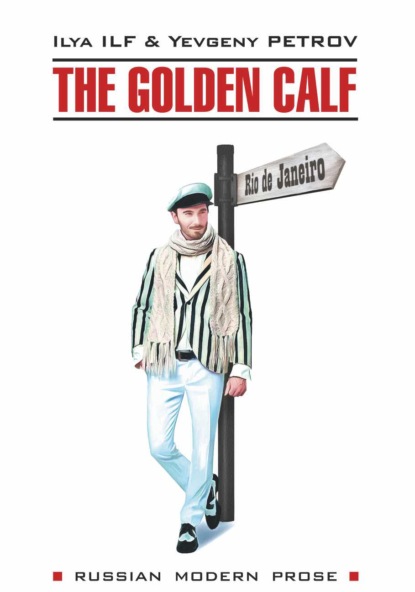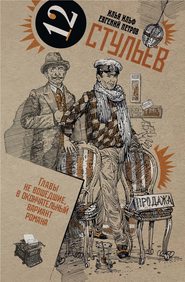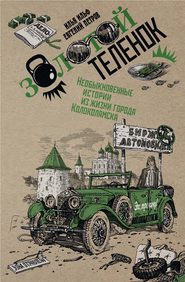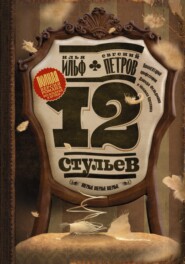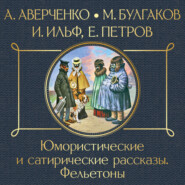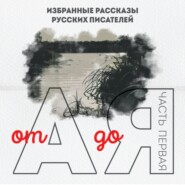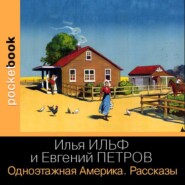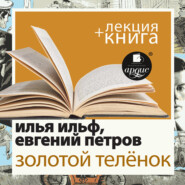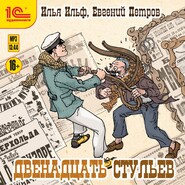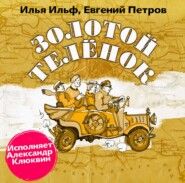По всем вопросам обращайтесь на: info@litportal.ru
(©) 2003-2024.
✖
Золотой теленок / The Golden Calf
Автор
Жанр
Серия
Год написания книги
1931
Теги
Настройки чтения
Размер шрифта
Высота строк
Поля
“Comrade Platonikov…,” said the deputy of Henri de Navarre, panting.
“Pervertov,” added the Lampshade.
“Have you seen him?” cried de Navarre.
“He was supposed to be taking a stroll here,” explained the Lampshade.
Balaganov had already opened his mouth to utter a curse, but Bender pushed him aside and said with stinging courtesy:
“We haven’t seen Comrade Platonikov, but if you are really interested in seeing him, you’d better hurry. He’s already being sought by some character who looks like an artist. A con artist, that is.”
Bumping against each other and getting their easels stuck together, the artists ran off. Then a horse cab careened from around the corner. Its passenger was a fat man whose sweaty gut was barely concealed by the folds of his long tunic. The passenger’s general appearance brought to mind an ancient advertisement for a patented ointment that began with the words: “The sight of a naked body covered with hair makes a revolting impression.” The fat man’s profession wasn’t hard to guess. His hand held down a large easel. Under the coachman’s feet lay a big shiny box which undoubtedly contained paint.
“Hello!” Ostap called out. “Are you searching for Pervertov?”
“Yessir,” confirmed the fat artist, looking plaintively at Ostap.
“Hurry! Hurry! Hurry!” cried Ostap. “Three artists are already ahead of you. What’s going on here? What happened?”
But the horse, banging its shoes on the cobblestones, had already carried away the fourth practitioner of fine arts.
“What a center of culture!” said Ostap. “You must have noticed, Balaganov, that of the four citizens we encountered thus far, all four were artists. How curious.”
When the half-brothers stopped in front of a small hardware store, Balaganov whispered to Ostap:
“Aren’t you ashamed?”
“Of what?” asked Ostap.
“That you’re actually going to pay money for the paint.”
“Oh, I see,” said Ostap. “Frankly, I am a little bit. It’s silly, you’re right. But what can you do? We’re not going to run to the city council and ask them to supply the paint for Skylark Day. They would, of course, but that could take us all day.”
The brilliant colors of the dry paint in jars, glass cylinders, sacks, caskets, and torn paper bags gave the hardware store a festive look.
The captain and the rally mechanic started the painstaking process of picking a color.
“Black is too mournful,” said Ostap. “Green won’t do: it’s the color of lost hope. Purple, no. Let the chief of police ride around in a purple car. Pink is trashy, blue is banal, red is too conformist. We’re going to have to paint the Antelope yellow. A bit too bright, but pretty.”
“And what would you be? Artists?” asked the salesman, whose chin was lightly powdered with cinnabar.
“Yes, artists,” answered Bender, “scenic and graphic.”
“Then you’re in the wrong place,” said the salesman, removing the jars and the bags from the counter.
“What do you mean, the wrong place?” exclaimed Ostap. “What’s the right place?”
“Across the street.”
The clerk led the two friends to the door and pointed at the sky-blue sign across the street. It had a brown horse head and the words OATS AND HAY written in black letters.
“Right,” said Ostap, “soft and hard feed for livestock. But what does it have to do with us artists? I don’t see the connection.”
It turned out there was a connection, and a very meaningful one at that. Ostap grasped it shortly after the clerk began his explanation.
The city had always loved fine paintings, and the four resident artists formed a group called the Dialectical Easelists. They painted portraits of officials and sold them to the local fine arts museum. With time, the pool of yet-unpainted officials grew smaller and smaller, and the income of the Dialectical Easelists had decreased accordingly, but they still managed to get by. The truly lean years began when a new artist, Feofan Smarmeladov, came to the city.
His first painting made quite a stir. It was a portrait of the director of the local hotel authority. Feofan Smarmeladov left the Easelists in his dust. The director of the hotel authority was not depicted in oil, watercolors, coal, crayons, gouache, or lead pencil; he was done in oats. While Smarmeladov was taking the portrait to the museum in a horse cart, the horse looked back nervously and whinnied. Later, Smarmeladov began to use other grains as well. He made portraits in barley, wheat, and poppy seeds, bold sketches in corn and buckwheat, landscapes in rice, and still-lifes in millet – every one a smashing success.
At the moment, he was working on a group portrait. A large canvas depicted a meeting of the regional planning board. Feofan was working in dry beans and peas. Deep in his heart, however, he remained true to the oats that had launched his career and undermined the Dialectical Easelists.
“You bet it’s better with oats!” exclaimed Ostap. “And to think those fools Rubens and Raphael kept messing with oils. Like Leonardo da Vinci, we’re fools, too. Give us some yellow enamel.”
Вы ознакомились с фрагментом книги.
Приобретайте полный текст книги у нашего партнера:
Приобретайте полный текст книги у нашего партнера:





